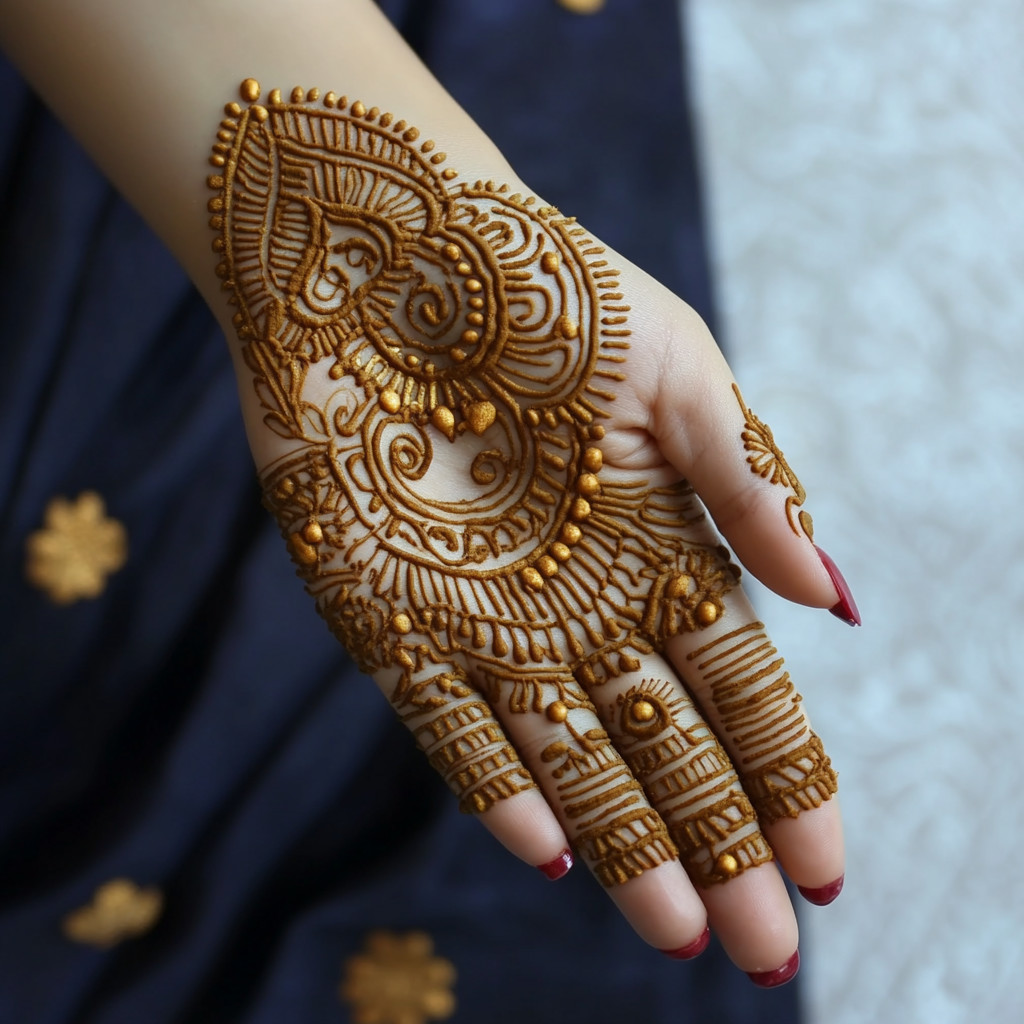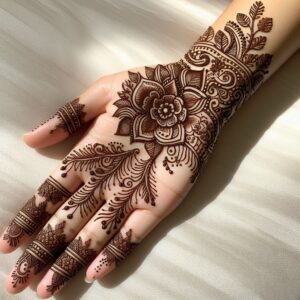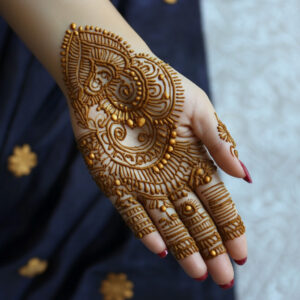Royal Front Hand Mehndi Design: Where Art Meets Grace and Power
There’s something magical about the way art and tradition can merge to create something timeless. I didn’t fully appreciate the depth of Mehndi until I came across a Royal front hand Mehndi design that was so intricate, so majestic, it felt as if centuries of history were woven into each line.
The front hand is often considered the most expressive and visible part of the body, making it the perfect canvas for this grand style of Mehndi. What stood out to me wasn’t just the beauty of the design—it was the deep connection between these patterns and the legacy they carry.
The Symbolism Behind Royal Front Hand Mehndi
Royal front hand Mehndi goes beyond simple beauty. The designs are crafted with care, precision, and meaning. Common motifs include peacocks, florals, and royal insignias, each with its own symbolism. The peacock, a striking feature in many royal designs, represents beauty, love, and spirituality. It’s a motif often used to signify prosperity and grace.
The designs typically begin at the wrist and extend across the entire palm and fingers, with every detail symbolizing something significant—whether it’s fertility, joy, or the hope for a prosperous future. Each swirl, each flower is a reflection of the royal heritage and tradition that these designs represent.
Mehndi as a Symbol of Status and Elegance
In many cultures, Mehndi is more than just an adornment—it’s a symbol of status and elegance, especially when it comes to royal designs. These intricate patterns are often reserved for grand occasions such as weddings or royal ceremonies, where the design’s complexity reflects the importance of the event and the person wearing it.
Royal families often commission skilled Mehndi artists who have perfected their craft over many years. Watching these artists at work is like seeing a masterpiece unfold in real-time—each stroke planned with precision, each motif carefully selected to create a design that radiates grandeur. The level of detail in Royal front hand Mehndi often indicates the family’s wealth and cultural heritage.
Connecting Art with Tradition
What captivated me most about Royal front hand Mehndi was how it bridges the gap between art and tradition. While the designs themselves are temporary, the stories they tell are timeless. In many royal households, Mehndi is passed down through generations—not just as an artistic skill but as a way of preserving history and culture.
I found myself immersed in these stories, learning how royal brides and women of noble lineage wore similar designs, each pattern reflecting their heritage. This connection between the past and present, between art and personal identity, is what makes Mehndi so much more than decoration. It’s a celebration of life, tradition, and the beauty of the human spirit.
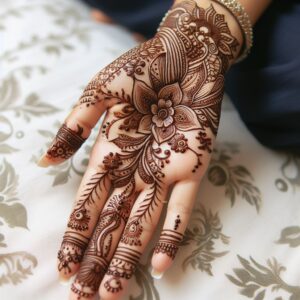
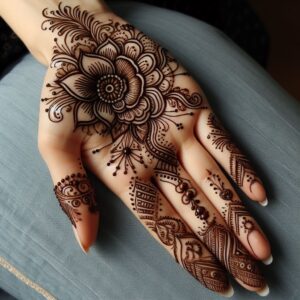

The Timeless Beauty of Royal Mehndi
The Royal front hand Mehndi design stands as a testament to the artistry and cultural richness that Mehndi represents. It’s not just about adorning the skin—it’s about telling a story, honoring history, and celebrating significant moments in life. Each design is a reflection of the person wearing it, but also of the generations of artistry and tradition that came before.
Mehndi may fade over time, but the legacy of these royal designs, their elegance, and the stories they tell will remain etched in memory long after the patterns have disappeared. It’s a reminder that beauty can be fleeting, but its impact is eternal.
Suggested posts to keep exploring Mehndi designs:
- Leg Mehndi Design: Finding Beauty in Life’s Simple Moments – Explore how leg Mehndi designs can bring subtle beauty to both everyday life and special occasions.
- One Finger Mehndi Design: Simple Elegance for Everyday Beauty – Discover how even minimalist Mehndi designs can hold significant personal meaning.
